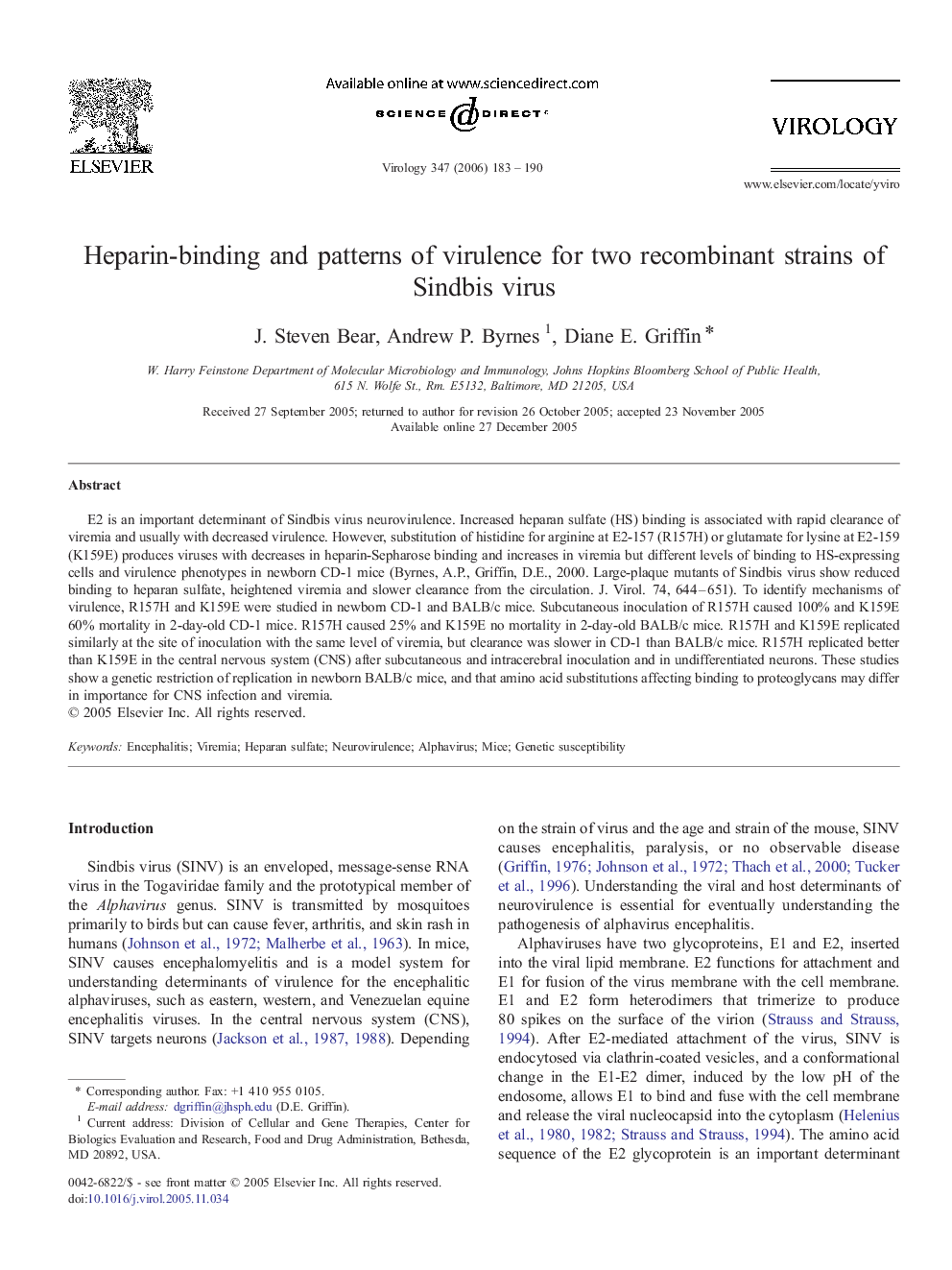| کد مقاله | کد نشریه | سال انتشار | مقاله انگلیسی | نسخه تمام متن |
|---|---|---|---|---|
| 3427694 | 1227437 | 2006 | 8 صفحه PDF | دانلود رایگان |

E2 is an important determinant of Sindbis virus neurovirulence. Increased heparan sulfate (HS) binding is associated with rapid clearance of viremia and usually with decreased virulence. However, substitution of histidine for arginine at E2-157 (R157H) or glutamate for lysine at E2-159 (K159E) produces viruses with decreases in heparin-Sepharose binding and increases in viremia but different levels of binding to HS-expressing cells and virulence phenotypes in newborn CD-1 mice (Byrnes, A.P., Griffin, D.E., 2000. Large-plaque mutants of Sindbis virus show reduced binding to heparan sulfate, heightened viremia and slower clearance from the circulation. J. Virol. 74, 644–651). To identify mechanisms of virulence, R157H and K159E were studied in newborn CD-1 and BALB/c mice. Subcutaneous inoculation of R157H caused 100% and K159E 60% mortality in 2-day-old CD-1 mice. R157H caused 25% and K159E no mortality in 2-day-old BALB/c mice. R157H and K159E replicated similarly at the site of inoculation with the same level of viremia, but clearance was slower in CD-1 than BALB/c mice. R157H replicated better than K159E in the central nervous system (CNS) after subcutaneous and intracerebral inoculation and in undifferentiated neurons. These studies show a genetic restriction of replication in newborn BALB/c mice, and that amino acid substitutions affecting binding to proteoglycans may differ in importance for CNS infection and viremia.
Journal: Virology - Volume 347, Issue 1, 30 March 2006, Pages 183–190